
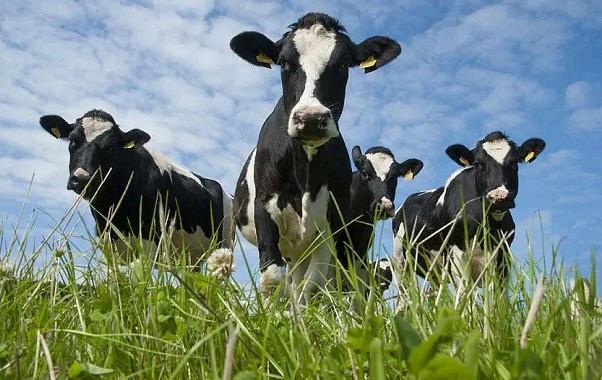



Herbivoresco-evolvedwithmixedgrasslandandforb ecosystemstobuildsomeofthemostfertilelandscapes onourplanet Whilegrazinganimalsareanintegralpart insuchcommunities,itistheplants,alongwiththeir microbialassociates,thatultimatelyunderpinthehealth andproductivityoflivingsystems Oneonlyhastothink oftheamountoflifeinadesertcomparedtoarich prairie Theimplicationsofgrazinganimals,inan environment,arelargelycorrelatedtotheeffectthey haveontheplantcommunity
Asaplantmaturesandstartstosetseed,leafgrowth, photosynthesisandrootexudationsubside Atimely pruneswitchesitshormonesystembackintoa vegetativemode,sothattheycanregrow Inthisway, grazingeventscaninitiateanotherroundofvegetative growth,withhigherphotosynthesisandcarbohydrate production
Bunchesoflargeranimals’tramplestandingforageand residueintothesoil,withinreachofdecomposersthat arethenabletobreakitdown Intheprocess,nutrients andorganiccompoundsareincorporatedandreleased intothesoilenvironment
Thedepositsofnitrogenrichmanureandurineonthe carbon-basedplantresidueimprovesthecarbonto nitrogenbalance,makingformoreefficient decomposition
Herbivorehoovescreatedivotsorpocketsonthesoil surfacethatbecomecollectionpointsforseed,organic materialsandwater,aidingthegerminationandthe establishmentofmoreplants

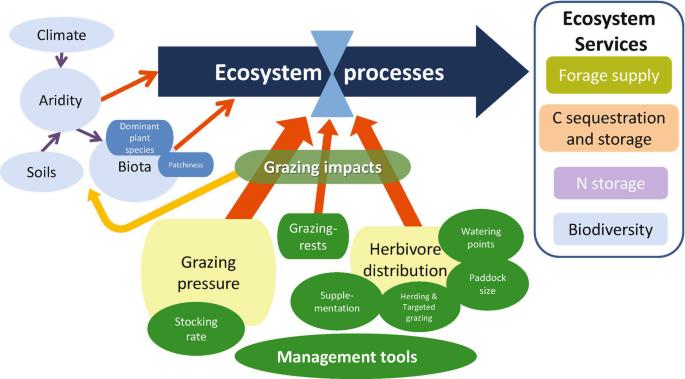
Herbivores host a robust population of microbes in their digestive system that can break down fibrous plant material In the process, they release and deposit the inherent nutrients, as manure and urine, on the soil, where they are available once again, to be used for plant growth

When grazing livestock aren't managed properly, they can cause a range of environmental issues
Plants need to put on good vegetative growth in order to harvest energy from the sun, and develop decent root systems to acquire nutrients and water from the soil
If animals graze plants when they are too young, it sets the plants back significantly, and can be fatal
When a significant portion of their foliage has been removed, plants have to draw upon reserves to support themselves through a phase of initial regrowth
If a recovering plant is re-grazed too soon, reserves are further exhausted, diminishing its capacity for regrowth This also hinders the development of deep root systems, which compromises a plants ability to withstand drought and recover nutrients from deeper in the soil
Overgrazing has more to do with how soon we graze a plant tha how much of it is grazed
If given the choice, herbivores will selectively graze the most desirable species first and preferentially graze tender regrowth before consuming less palatable species This puts our best species at a significant disadvantage



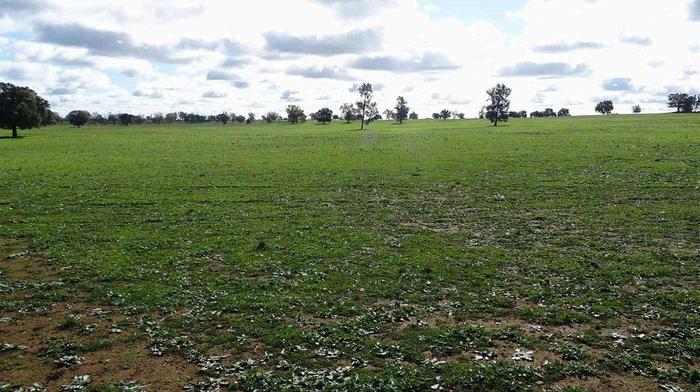
Grazing animals consume the flowers and seed heads of many plants Annual species will not persist in plant communities unless they are able to set seed Over time, all of this leaves us with less of the good plants, and lower diversity
When livestock are kept in areas for extended periods of time and the forage is continually overgrazed, the plant community becomes stunted and scant This leaves the soil prone to structural degradation, exposed to the heat, wind and rain, and susceptible to erosion and nutrient loss
Constant animal traffic compacts the soil, and on wet hooves cause pugging, both of which seriously hinder s growth
The build-up of high nutrient excrement in places tha such as water sources, can be become a pollution issue
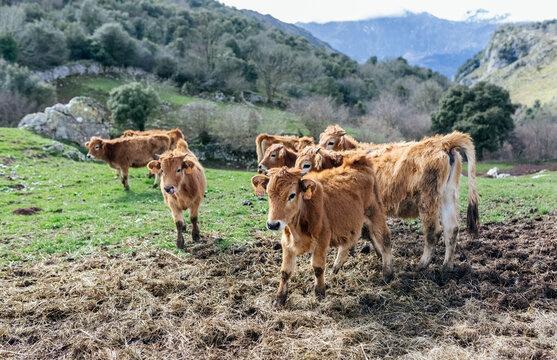

Grazing animals require adequate amounts of protein, energy, fibre, and essential minerals and vitamins to maintain good condition These requirements vary somewhat between different species and breeds
Ruminant species, such as cows and sheep, have a rumen full of microorganisms that enable them to digest the high amounts of fibre in plants like grass
The rumen also contains different groups of organisms to digest proteins, sugars, starches and fats A consistent day to day diet makes for higher feed conversion efficiency and happier animals with fewer health problems

The composition of forage also varies, between plant varieties and species, with stages of growth and in the different parts of a plant
Coolseasonplantsarehigherinproteinandsugarand lowerinfibrethanwarmseason(C4)grasses The energyincoolseasonspeciesismostlyintheformof sugarwhereastheenergyinC4grassesismostlyin theformoffats
Leafmatterishigherinproteinandenergy,andlower infibrethanstemmatter Younggrowth,isalsohigher inproteinandenergyandlowerinfibre Asforage ages,itlignifiesandbecomesmorefibrousandthe proteinandsugarcontentdrop
Ruminants, in particular, require a fairly high intake of fibre and if the forage that they are eating is too low in fibre, they are prone to scouring, as witnessed by sloppy manure
If consuming lots of high protein forage, protein intake may be too high, relative to energy When this happens, the excess protein is converted to ammonia gas which elevates the pH, causing all sorts of problems

When sugar and/or starch intake is too high, excess lactic acid is produced, causing acidosis
If animals are consuming mature forage that is high in fibre and too low in protein, there may not be enough protein to maintain the rumen microbes
Animal performance markedly improves with the supplementation of certain minerals and vitamins if they aren’t getting enough from their feed

Ideally, we want to manage our grazing so that we: avoid selective grazing give grazed plants adequate time for full recovery maximize forage utilization provide livestock with a consistently suitable diet maintain adequate plant cover on the soil
What we can manage is:
When we do and don’t graze an area 1
The space and time allocated to graze events 2
It’s a case of the how, not the what.
Theseason,topography,shelterandthestateoftheforageareallthingsweneedtoconsiderwhenplanning ourgrazingevents
Asfarastheforageisconcerned,wewantittomeettherequirementsoftheanimalsandbestrong enoughtohandlebeinggrazed
Ascoolseasonplantspeciesaregenerallylowinfibreandhighinproteinandsugar,especiallywhenyoung, theyshouldbeallowedadequatetimeforestablishment,andrecoveryafterbeinggrazed
Legumestands,particularly,arebettergrazedwhenmoremature,astheyarehighinproteinrelativeto energy,andlowinfibrewhenyoung minimize traffic damage prevent the build-up of internal parasites
If livestock are on young forage, early in the green season, they may need supplementation with some feed that is high in fibre, such as straw It is important to make sure that livestock are getting enough protein to utilise the high fibre content in the forage, over the dry season In the growing season, we want to try and graze paddocks while the forage quality is high
You can put aside paddocks in the growing season, and not graze them, to stockpile feed for the non growing season and reduce the need to feed out silage or hay
Ideally, we want to move livestock on before parasites get a chance to lay eggs on the forage, and then stay away from these areas long enough for the eggs die off, which often conveniently aligns with the recovery needs of plants

By only grazing well established and fully recovered species, we enable plants to build reserves, regrow faster, put more exudates into the soil etc and the forage has a better nutrient profile, courtesy of more developed root systems
In nature, dense and moving grazing herds are an important component in a symbiotic arrangement with the larger living communities of open landscapes, where what works best for the animals is aligned with what is best for the rest.
There are numerous benefits to be had from sizing our grazing areas (breaks) so the herd density is high enough that they have to eat what’s in front of them and trample what they don’t eat onto the soil, in good time Selective grazing gives the unwanted weeds an advantage over more desirable forage plants When the herd density is high enough, anything that’s not eaten is at least stomped to the ground
When animals are free to wander they and gather and rest in certain spots, m traffic and poor distribution of dung a Whilst a significant amount of plant m the ground with dense herds, this prot soil from the elements and provides fo
Time:
Regrowth usually starts around three therefore most important that animals don’t get the chance to graze this regrowth, as this significantly knocks plants back! This is not so applicable in the dry season whe plants aren’t actively growing
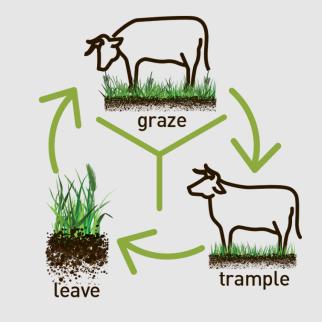

If we are rotating our animals, we want to ensure their day to day dietary intake is fairly consistent, and this involves shorter breaks
By bunching the animals tighter, in smaller areas, we utilise more of the forage in each graze event, and buy time for recovery in our rotation cycle Livestock must be moved on before they compact or bare off the soil Maintaining some residual or living plant cover at all times is essential for soil health

If we have to keep livestock in an area for an extended period of time, at calving for instance, then it is best to only do so on fully recovered pasture and then allow full recovery afterwards Sacrificial or otherwise damaged paddocks may need to be renovated, reseeded etc and again, allowed ample time for plant establishment and recovery

The benefits that can be achieved when we manage our grazing properlyinclude:
increasedgrowth,andhigherquality,feed
moreefficientutilisationofforage
greaterplantdiversityinourpastures
improvedsoilfunctionandfertility
extendedgrowingseasons
betterlivestockcondition,reproductionandgrowth
lowerhay/silagerequirements
lessneedtoseasonallyreseedpaddocks
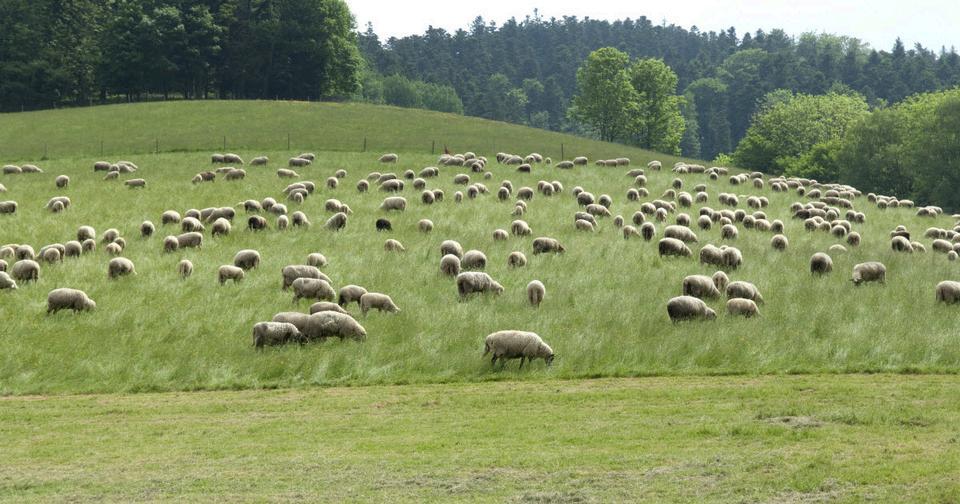
So,wecanincreaseourproductionandlowerourinputcostsifw optimise our grazing management, but our initial set up and da labourrequirementsaregreater
Howmuchcapitaldowehavetoinvestinsettingup?
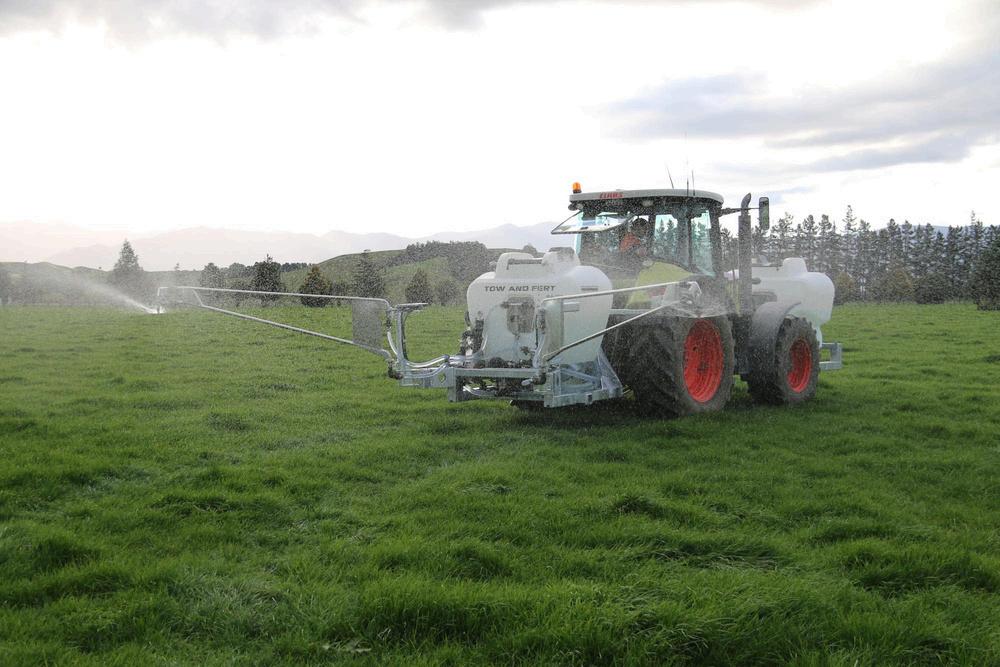
How much available time/labour do we have to put towards managinglivestock?
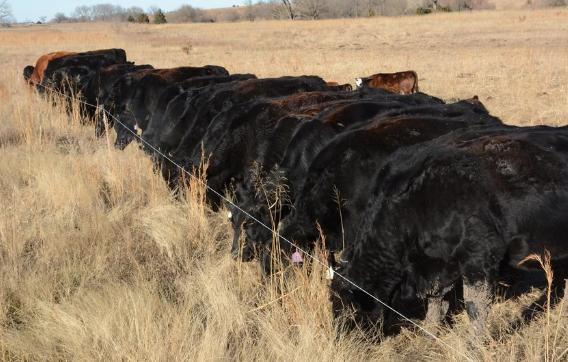
Whatdoesourexistinginfrastructurelooklike?Howeasyisit tomodifythecurrentoperation?
What’s the size of our enterprise? keeping in mind, it takes about the same amount of time to move a small herd as it doestomoveabigherd
Iflookingtoscaleupalivestockenterprise,highintensitygrazing management offers a way to significantly increase production, andisamuchcheaperthanpurchasingtherealestateneeded,to increase our production by the same amount, under more conventionalmanagement
Once a property has been well set up for high intensity grazing management, the extra cost of in labour is more than compensatedforbythereducedinputcosts
To achieve the desired outcomes, we must be prepared to set up small enough areas to get the necessary herd density, and take them off the area for long enough to get the required recovery
Grazing animals this way can be a very rewarding experience
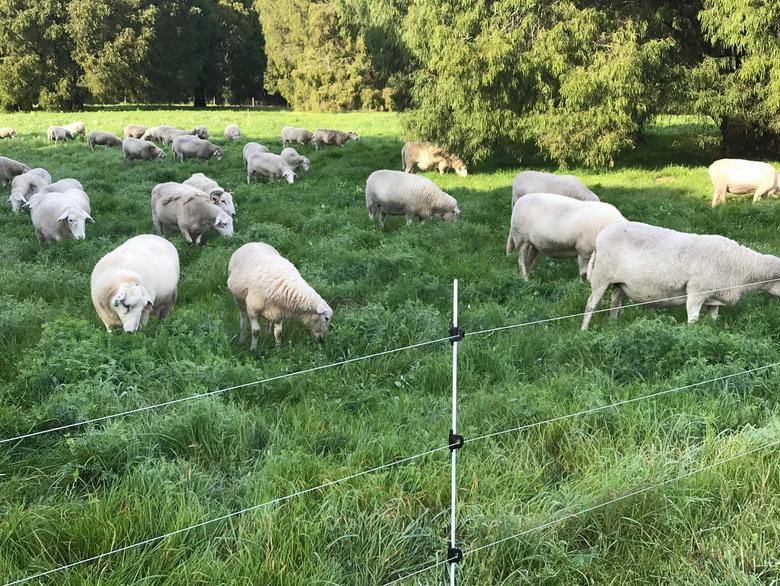
It is much more effective to set aside some smaller paddocks where you can commit to doing it properly, than take half measures across the whole farm. This will give you a much clearer understanding of what’s involved and what is possible
This document is a downloadable summary of the online article & content hub ‘Managing Grazing for Pasture, Soil and Animal Health’. The full article can found at: https://lowerblackwoodshorthandstoriescom/managing-grazing/indexhtml
The article was produced by 'Talkin' After Hours', the Lower Blackwood Landcare's Online Community & Information Hub, and written & collated by Mark Tupman from Productive Ecology The aim of the article is to assist land managersin making informed decisions around grazing for Pasture, Soil and Animal Health


The development of this article was funded through Soil Wise Soil Wise is funded by the National Landcare Program Smart Farms Small Grants – an Australian Government initiative It is supported by Healthy Estuaries WA – a State Government program

